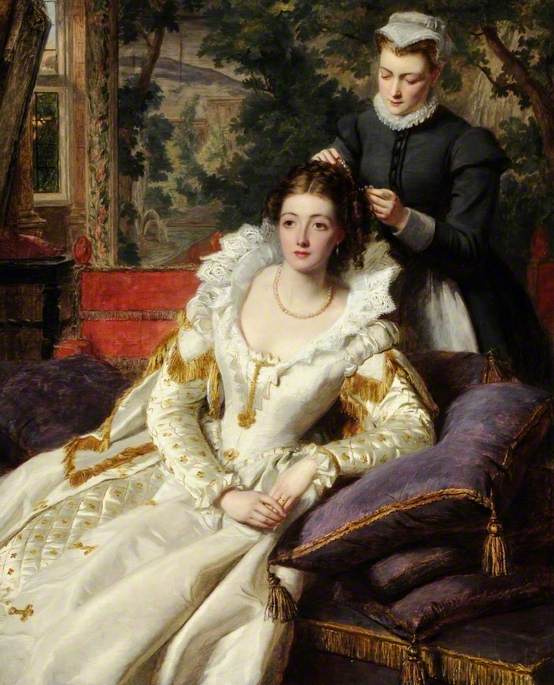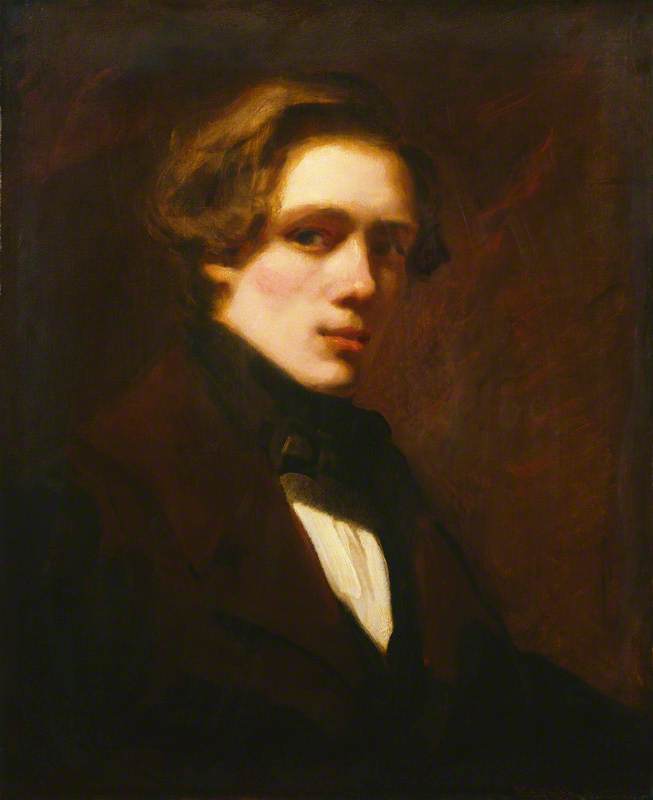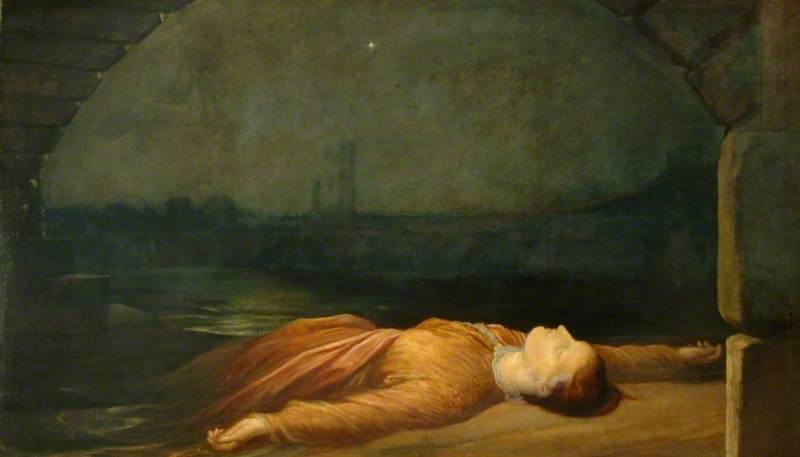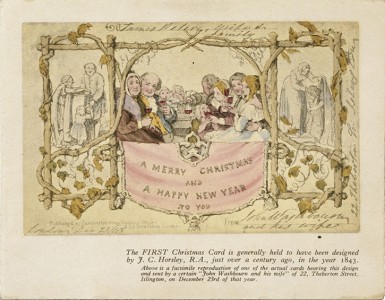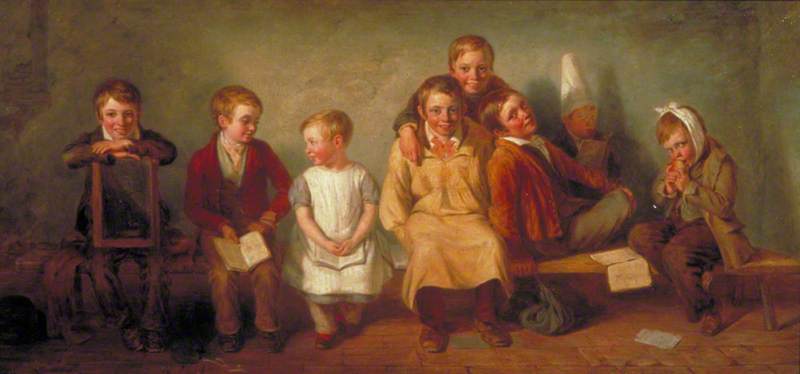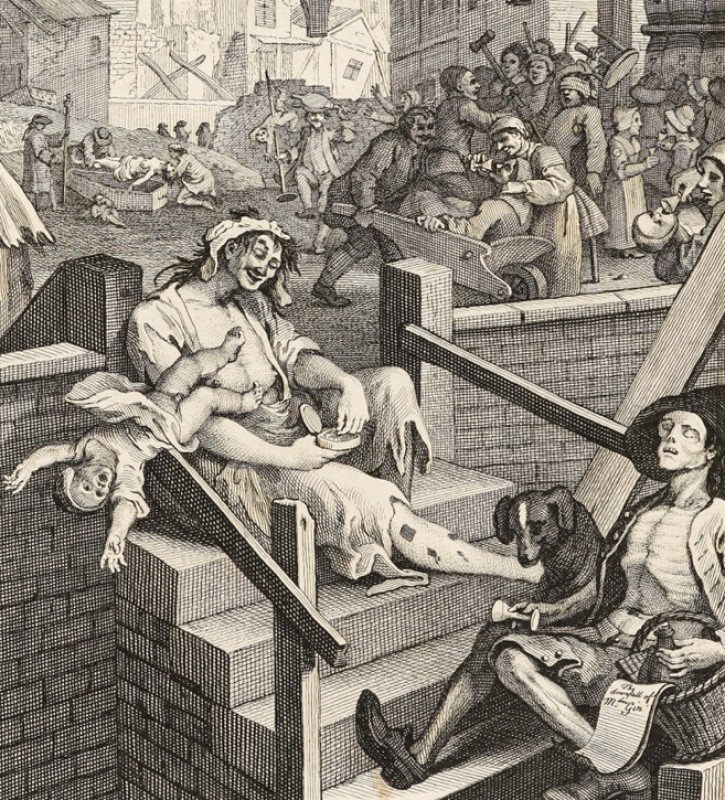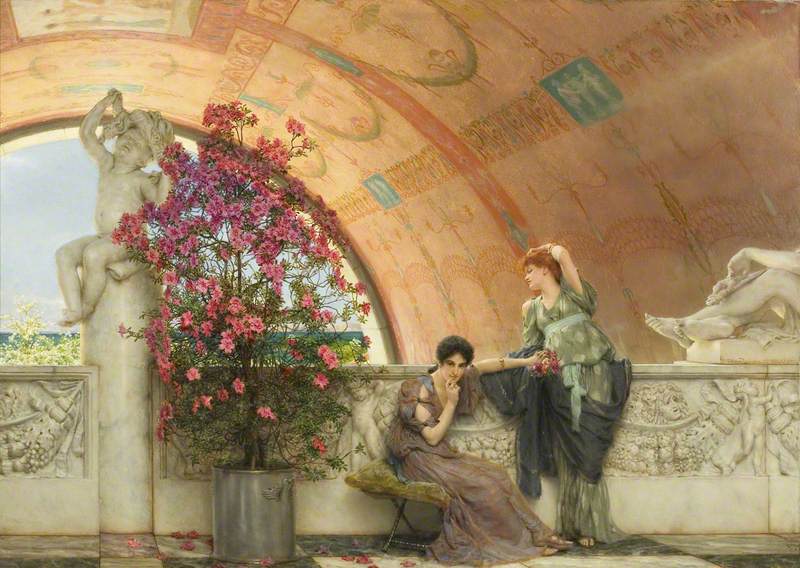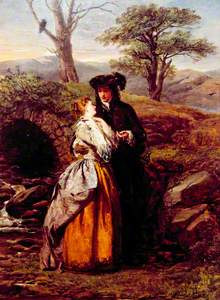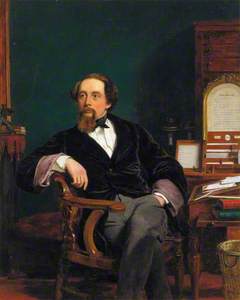William Powell Frith was one of the most popular and successful artists of the Victorian era. His works fell out of fashion after his death, but have had a resurgence in popularity since the 1950s. Today he is one of the most searched for artists on Art UK.
Frith was born on 9th January 1819 in Aldfield, near Ripon in Yorkshire. Perhaps unusually for the time, his father suggested he take up art.
In 1835 he moved to London to train at Sass's Academy in Charlotte Street, and he then attended the Royal Academy Schools. Frith started his career as a portrait painter and first exhibited at the British Institution in 1838.
The Duel Scene from 'Twelfth Night' by William Shakespeare
1842
William Powell Frith (1819–1909) 
In the 1840s he often based works on the literary output of writers such as Shakespeare, Charles Dickens and Sir Walter Scott.
The Bride of Lammermoor
(from Sir Walter Scott's novel) c.1852
William Powell Frith (1819–1909) 
Frith's scene The Bride of Lammermoor is based on a scene from Sir Walter Scott's 1819 novel of the same name, and Dolly Varden is a character in Charles Dickens' 1839 novel Barnaby Rudge, set in 1780s London.
The figure in this work is wearing an outfit that was popular in the late 1860s, inspired by the character and known as the 'Dolly Varden'. The painting is a good example of what was known as a 'fancy portrait', where the artist would paint a portrait from imagination and name them after characters from popular literature.
In 1859 Frith painted Dickens' portrait too.
The author rather humorously said of it: 'It is a little too much (to my thinking) as if my next door neighbour were my deadly foe, uninsured, and I had just received tidings of his house being a-fire.'
In 1853 Frith was elected a Fellow of the Royal Academy and presented The Sleeping Model to the institution as his Diploma work.
In the 1850s, Frith turned away from portraits and literature to paint contemporary scenes. These are the works he is best known for today and he had great commercial success with the genre.
The original 1854 work Ramsgate Sands (Life at the Seaside) is today in the Royal Collection. Later in his life, Frith made many copies of his earlier famous works – this one dates to 1905 and is in the Russell-Cotes Art Gallery & Museum in Bournemouth.
Frith's move to paint people and scenes of everyday life – and outside – from the early 1850s anticipated the Impressionists' subject matter, and their practice of working en plein air in the 1870s and 1880s.
Perhaps his most famous work is The Derby Day, now in the collection of the Tate (and with copies in the V&A and Manchester Art Gallery).
It depicted the crowd at the famous annual race at Epsom Downs, and was based on photographic studies by Robert Howlett. The painting was so popular when it was shown at the Royal Academy that it had to be railed off from the large crowds it attracted (this had only happened previously for David Wilkie's Chelsea Pensioners in 1822).
Another of Frith's great successes was The Railway Station of 1862, the original of which is in the collection of Royal Holloway, University of London.
The scene shows a platform at Paddington Station with a large and disparate group of people. Frith has hidden a few secrets in the work. The group in the foreground is Frith and his family, including some of his children. The police officers making an arrest are based on two actual policemen – James Brett and Michael Haydon. The bearded man is an Italian refugee nobleman.
Frith's 1858 painting The Crossing Sweeper, now in the Museum of London, is another example of his ability to juxtapose different elements of Victorian society in one work.
It's a powerful piece that visually creates a sense of what Dickens was describing in his novels of the time. Frith made copies later in his life, updating the dress to reflect the changing times. This later version is in the Government Art Collection.
In 1863 Frith was commissioned to paint the royal wedding of Queen Victoria's eldest son, Edward, Prince of Wales (later Edward VII) and Alexandra of Denmark. The original is in the Royal Collection, but this copy is in Liverpool's Walker Gallery.
The Marriage of the Prince of Wales
1866
William Powell Frith (1819–1909) (after) 
In the early 1880s Frith produced his last major painting of a new composition, his A Private View at the Royal Academy, 1881. The original is in a private collection, but the detailed sketch he made for it is in the Mercer Gallery, Harrogate.
Study for the Private View, 1881
1882
William Powell Frith (1819–1909) 
While at first glance the piece is a traditional composition showing a refined crowd at the Royal Academy, the painting is in fact a satire on what was going on in the art world.
At this time the Pre-Raphaelites and the Aesthetic Movement were both in fashion, with the former led by the likes of Dante Gabriel Rossetti, William Holman Hunt and John Everett Millais, and the latter advocated by Oscar Wilde. Wilde can be seen in the group on the right of Frith's painting, discussing the art on display.
Frith himself, however, was a traditionalist, very much against both the Pre-Raphaelites and the Aesthetic Movement. As such, Frith's friends – including the fellow traditionalist painter Frederic Leighton – look at Wilde disapprovingly. Anthony Trollope and John Everett Millais are also depicted.
Frith made his aversion to developments in modern art even more publicly in two autobiographies – My Autobiography and Reminiscences (1887) and Further Reminiscences (1888) – perhaps surprisingly they are written in an engaging and chatty style!
Many Happy Returns of the Day
1856
William Powell Frith (1819–1909) 
From the wholesome family images Frith produced, such as Many Happy Returns of the Day, the public might have expected him to be the epitome of a Victorian family man.
However, during his first marriage to Isabelle he kept his mistress down the road – Mary Alford, who was formerly Frith's ward. On Isabelle's death, he lost little time and married Mary a year later.
In total, he fathered 19 children with his two wives, 12 with Isabelle and seven with Mary.
Frith died in London on 2nd November 1909 and is buried in Kensal Green Cemetery in London.
Thanks to the huge changes in art and taste in the twentieth century his works fell out of favour, but have more recently been reassessed. Today he is regarded as one of the finest traditionalist artists of the Victorian era.
Andrew Shore, Head of Content at Art UK



